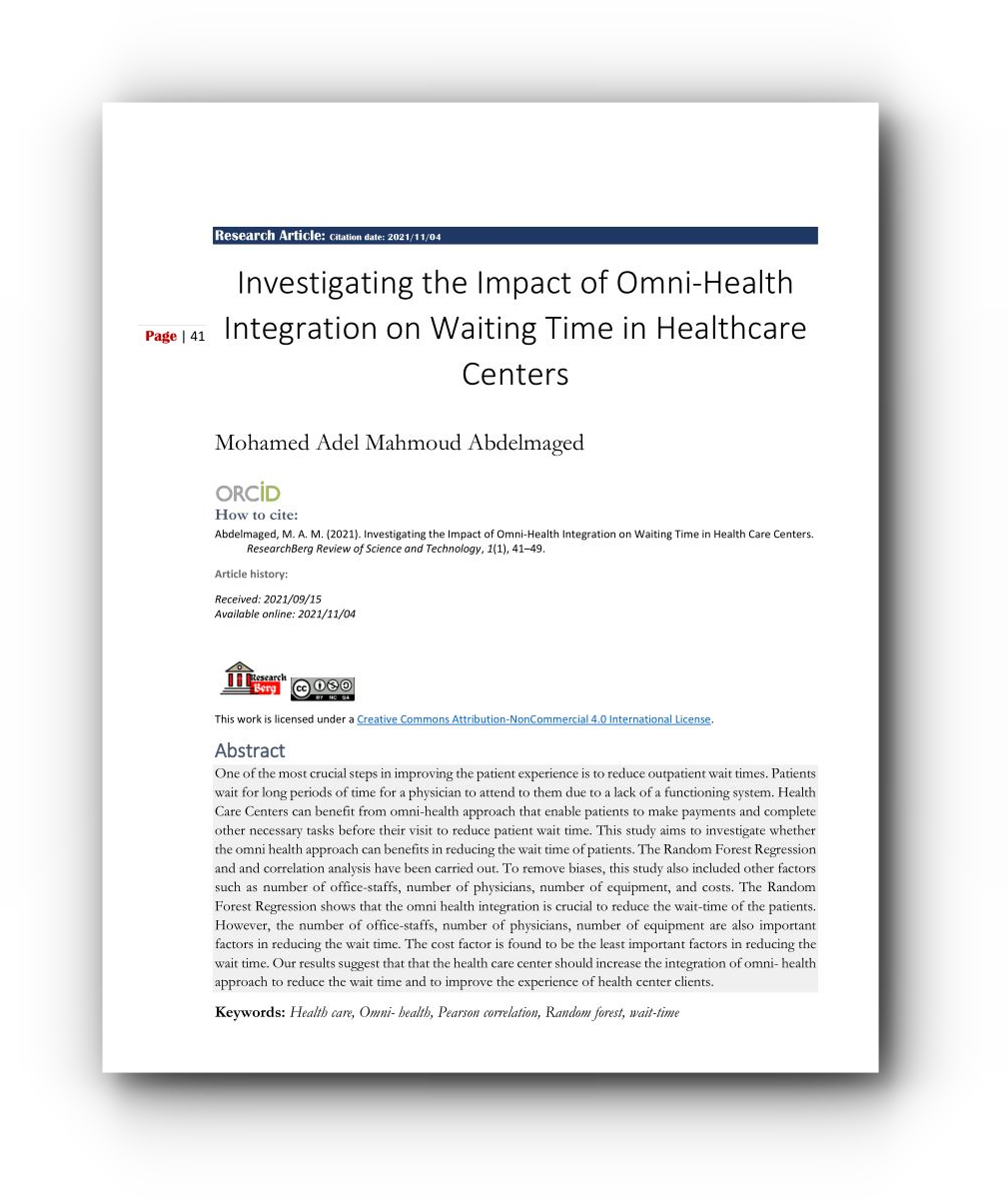Investigating the Impact of Omni-Health Integration on Waiting Time in Healthcare Centers
Keywords:
Health care, Omni- health, Pearson correlation, Random forest, wait-timeAbstract
One of the most crucial steps in improving the patient experience is to reduce outpatient wait times. Patients
wait for long periods of time for a physician to attend to them due to a lack of a functioning system. Health
Care Centers can benefit from an omni-health approach that enables patients to make payments and complete
other necessary tasks before their visit to reduce patient wait time. This study aims to investigate whether
the Omni health approach can benefit in reducing the wait time of patients. The Random Forest Regression
and correlation analysis have been carried out. To remove biases, this study also included other factors
such as the number of office-staffs, number of physicians, number of equipment, and costs. The Random
Forest Regression shows that Omni health integration is crucial to reduce the wait-time of the patients.
However, the number of office-staffs, number of physicians, number of equipment are also important
factors in reducing the wait time. The cost factor is found to be the least important factor in reducing the
wait time. Our results suggest that that the health care center should increase the integration of the Omni- health
approach to reduce the wait time and to improve the experience of health center clients.

Downloads
Published
How to Cite
Issue
Section
License
Copyright (c) 2021 ResearchBerg

This work is licensed under a Creative Commons Attribution-NonCommercial-NoDerivatives 4.0 International License.




